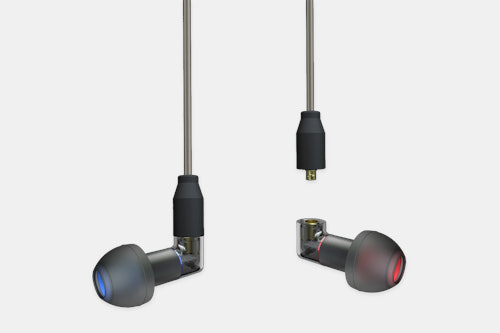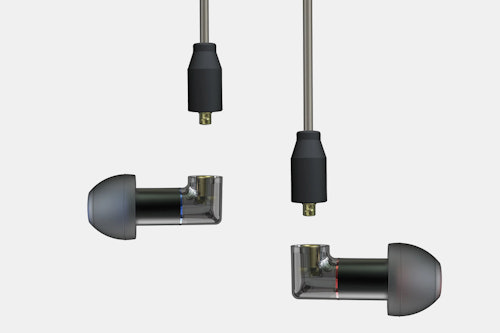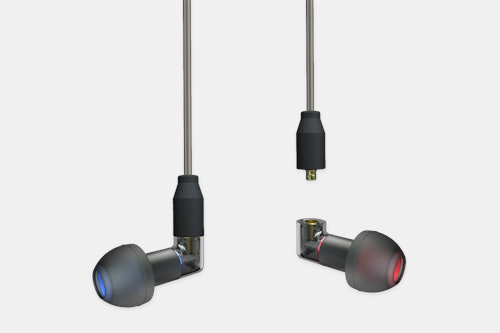Click to view our Accessibility Statement or contact us with accessibility-related questions VIEW 3 MORE
VIEW 3 MORE
Want to know something about this product or how to use it?
Ask the community!
Ask the community!
Sort by: Newest
keyboard_arrow_down
SuperFlyEDSguy
67
Aug 27, 2023
Though a decent amp could generally be beneficial to a quality headphone or IEM, it actually all boils down to how hard their speakers are to drive. The Impedance rating in the specs will tell you just that. Impedance is to Alternating Current (AC) what Resistance is to Direct Current (DC). The more “resistance,” the harder it’s going to be to drive! Better quality cans ‘usually’ have a higher Impedance, but that’s only because there’s more parts inside and as they transform the electrical energy into ideally sound energy, and less ideally into heat energy (as a natural byproduct), you’ll either need more Current OR more Voltage to drive those speakers. (With Resistance being a static value or a value that remains generally the same, you’ll either need more Current OR more Voltage to drive those cans as they’re inversely proportional to one another.) In case you’re wondering why manufacturers use Impedance instead of Resistance, the electrical energy going through the cable is NOT linear, but rather a representation of the sound-waves that it’s carrying to the speakers. If you hook the cable up to an Oscilloscope, you could actually see a visual representation of the sound-waves! This is why Impedance is usually given at a set frequency, e.g. 16Ω @ 1 kHz. The Impedance will change at different frequencies, so you need a set frequency to ensure accuracy.
Now, I’m sorry if this was confusing, but I wanted to get all of the engineering principles out of the way before giving you the numbers, because if you understand what I just told you, the numbers will be super-easy! Okay, if Impedance is just “Resistance against electrical energy representing sound-waves,” and if you have too much energy being resisted, you won’t hear anything or at least the volume and quality will suck, right?! On the other hand, if the Impedance is low and you could get a ton of electrical energy through, it’s easy to drive, yes? That’s all there is to it! For real! If you have a fairly low Impedance, let’s say your IEMs are rated around 16Ω, they’ll be easy enough to drive without requiring an amp. Moving up to around 32Ω, an amp will likely show you characteristics in the sound that you may not otherwise hear, but you probably don’t “need” one! Once you get above 64Ω you’ll want to consider an amp, even a dongle, as there will be just enough energy being resisted to be a pain, though this really goes from one device to the next. Just listen and see. Your ears will know better than a number! (Oh, don’t push too much power through a low impedance speaker either, you don’t want to blow it!)
Once you get into “Pro” territory with Impedance values >= 150Ω, you better believe an amp will be required to enjoy the audio! Depending on the amp, generally 150Ω or 300Ω will be where you’ll HAVE TO move-up to the “High Power” setting as many amps have a High/Low Power switch. Most amps that you and I would use are rated up to 600Ω and will have the High/Low cutoff in the middle. I’ve seen some amps that do far less, so you just have to see the how the amp is rated and if it will meet the Impedances of the headphones and IEMs you plan on using with it. You can use some pretty nice cans with a quality amp that could go up to 600Ω though!
As for a DAC, it’s not so much about the output than it is about the input, to make it as simple as possible: a higher quality source will result in better output performance! You shouldn’t need to go overkill and I personally ‘compromise’ my music between CD Quality and 24/48 as the sonic qualities will be exponentially less noticeable once you go beyond that. I would strongly recommend using “Lossless” files as your source. I like the ALAC and FLAC formats. MP3 is way too “lossy” to enjoy with good cans! Just make sure you are using headphones or IEMs that could go a bit beyond the general 20 Hz to 20 kHz range that has become pretty standard. I like using IEMs that double that and can max out at 40 kHz. I also prefer IEMs with multiple drivers, however I’ve tried a few recently with a single Dynamic Driver and some were very nice! Planer magnetic drivers are also a nice touch! I’m using Mee Audio’s hybrid pair at the moment and they’ve grown on me!
Hopefully that answered your questions!
Be well. ✌️





